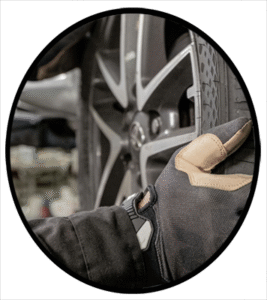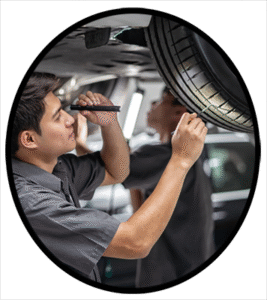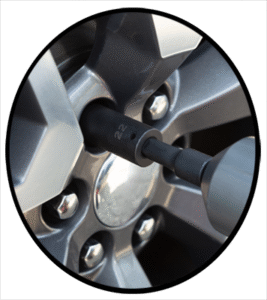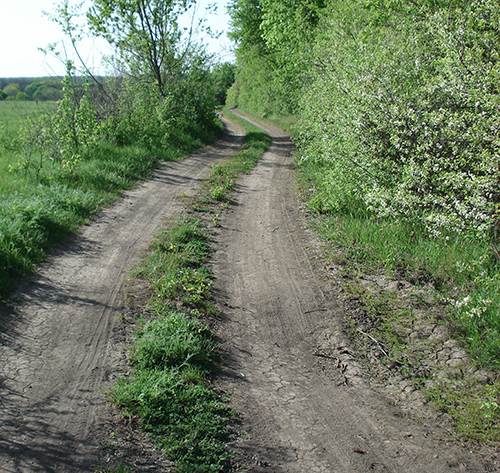
Summer Tires Sales, Installation, Repair






 CERTIFIED Mechanics
CERTIFIED Mechanics OHIO Owned & Operated
CERTIFIED Mechanics
Summer Tires Sales, Installation & Repair
Summer tires are another season-specific tire and are designed to provide maximum traction in warmer temperatures whether wet or dry. Summer tire treads are not as deep as other tire types and do not have the intricate series of smaller slits and grooves.
Instead, summer tires maximize the amount of rubber on the road to perform better in warmer temperatures. The tread pattern includes large, solid tread blocks with just enough channels and depth to remove excess water from the contact areas. Some brands of summer tires maintain a tread pattern very similar to the original rubber tires with four or five channels running around the circumference of the tire.
Rubber is the ideal material for automobile tires. It has excellent elasticity properties that allow it to absorb significant impacts while supporting over a ton of weight, yet still retains its round shape. It’s elasticity also forms around road imperfections allowing for maximum traction and performance.
Summer tires can be used year-round in deep southern climates where temperatures rarely drop below 40°. Most of the United States, however, experiences at least several days of below freezing weather. In these climates, the summer tires need to come off. At this temperature the rubber becomes more rigid and brittle and loses its ability to maintain good traction. It also makes the tire more vulnerable to damage.
To get your fleet or family vehicles ready for the summer, give Ohio Autocare Cincinnati a call. We can size, balance and mount your summer tires and get you back on the road.
Summer Tires Sales, Repair & Installation
For new Summer Tire Sales, Service and Installation in Cincinnati near the Kenwood Mall area, Call
513-752-0202
Or click the auto shop below for our convenient online scheduling app.
Summer Tires
Many automobile components were inspired by the non-motorized crafts of the time. The wheels are no different. As the automobile began to take form, the wheels were commonly made of wood or metal with long spokes. Some added a layer of leather to extend the life of the wheel and somewhat cushion the ride. Just as automobiles were starting to come into their own, bicycle manufacturers began to offer models with solid rubber tires.
The natural elasticity of rubber from the rubber tree made it an ideal solution for automobile tires as it absorbed some of the blows from the road while protecting the rim from damage. The elasticity of rubber also provided excellent traction…in dry weather. Throw a little moisture on the surface, though, and the rubber tires were nearly as hazardous as the wood and steel tires.
The solution again came from the bicycle industry. Bicycle tire manufactures determined a single channel around the circumference of the rubber tire greatly improved traction. Automobile tires at the time weren’t too much bigger than bicycle tires, so tire manufacturers just ran a couple more ribs around the tire. Not long after that, pneumatic rubber tires were being developed. These tires featured a separate air-filled innertube and was a significant upgrade over the other bone-jarring wheels available over the crater-covered “roads” of the time.
“Roads” is a relative term as virtually no roads existed outside of cities. In population centers, some roads may have been gravel, wood planks or bricks, but these were designed more for bicycles and horse carriages rather than the occasional horseless carriage. Roadways developed specifically for automobiles began in the 1920’s with the development of concrete and asphalt.
At this point, pneumatic tires became an extension of the suspension system. The pneumatic tires not only provided passengers with a more comfortable ride, it also significantly reduced the jolts and stresses on the vehicle as a whole.
The improvement in roads had an impact on the tire industry. As roads improved, tire rims became smaller and the tires themselves became wider which allowed cars to ride closer to the ground. This resulted in greater control at faster speeds. This remained the standard until after World War II when automobiles were also increasing in size and technology. Early treads for these larger tires simply mimicked those of the smaller tires, but with more channels.
As tire technology improved, manufacturers were able to create more extravagant tread patterns in their tire molds. Early tread patterns were established more for a manufacturer’s identity than any water removal or safety enhancement. They soon learned how tire treads could aid in traction and stability and started adding perpendicular and angular channels to the main vertical ribs that were very effective in removing water from below the tire.
Summer tires, though, didn’t need too complex of a tread pattern as natural rubber performs better in warmer temperatures. Their tread patterns simply need enough channels to remove larger amounts of water. In fact, many of tread patterns of today’s summer tires look very similar to the original pneumatic tires.
Many automobile components were inspired by the non-motorized crafts of the time. The wheels are no different. As the automobile began to take form, the wheels were commonly made of wood or metal with long spokes. Some added a layer of leather to extend the life of the wheel and somewhat cushion the ride. Just as automobiles were starting to come into their own, bicycle manufacturers began to offer models with solid rubber tires.
The natural elasticity of rubber from the rubber tree made it an ideal solution for automobile tires as it absorbed some of the blows from the road while protecting the rim from damage. The elasticity of rubber also provided excellent traction…in dry weather. Throw a little moisture on the surface, though, and the rubber tires were nearly as hazardous as the wood and steel tires.
The solution again came from the bicycle industry. Bicycle tire manufactures determined a single channel around the circumference of the rubber tire greatly improved traction. Automobile tires at the time weren’t too much bigger than bicycle tires, so tire manufacturers just ran a couple more ribs around the tire. Not long after that, pneumatic rubber tires were being developed. These tires featured a separate air-filled innertube and was a significant upgrade over the other bone-jarring wheels available over the crater-covered “roads” of the time.
“Roads” is a relative term as virtually no roads existed outside of cities. In population centers, some roads may have been gravel, wood planks or bricks, but these were designed more for bicycles and horse carriages rather than the occasional horseless carriage. Roadways developed specifically for automobiles began in the 1920’s with the development of concrete and asphalt.
At this point, pneumatic tires became an extension of the suspension system. The pneumatic tires not only provided passengers with a more comfortable ride, it also significantly reduced the jolts and stresses on the vehicle as a whole.
The improvement in roads had an impact on the tire industry. As roads improved, tire rims became smaller and the tires themselves became wider which allowed cars to ride closer to the ground. This resulted in greater control at faster speeds. This remained the standard until after World War II when automobiles were also increasing in size and technology. Early treads for these larger tires simply mimicked those of the smaller tires, but with more channels.
As tire technology improved, manufacturers were able to create more extravagant tread patterns in their tire molds. Early tread patterns were established more for a manufacturer’s identity than any water removal or safety enhancement. They soon learned how tire treads could aid in traction and stability and started adding perpendicular and angular channels to the main vertical ribs that were very effective in removing water from below the tire.
Summer tires, though, didn’t need too complex of a tread pattern as natural rubber performs better in warmer temperatures. Their tread patterns simply need enough channels to remove larger amounts of water. In fact, many of tread patterns of today’s summer tires look very similar to the original pneumatic tires.
